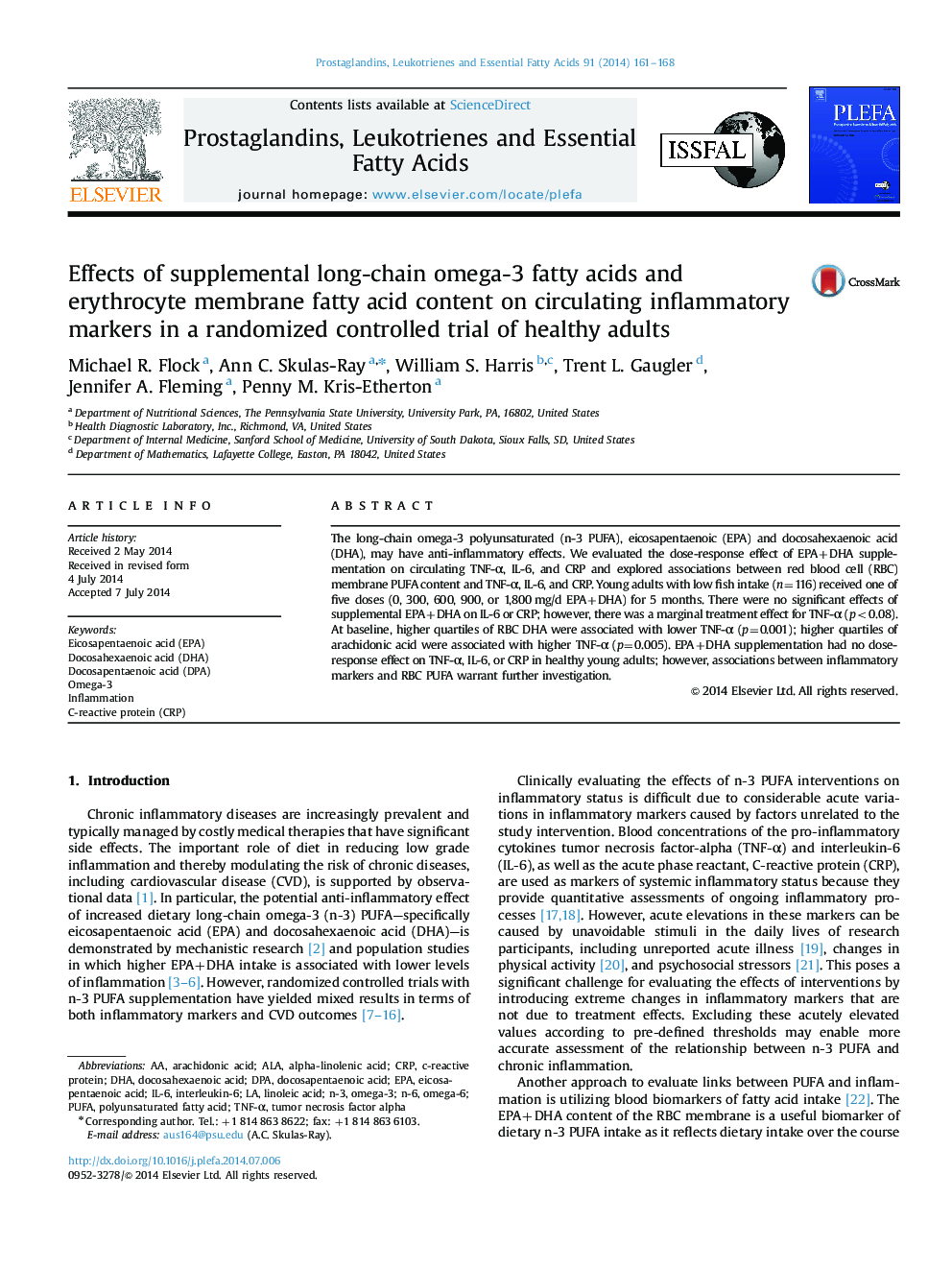| کد مقاله | کد نشریه | سال انتشار | مقاله انگلیسی | نسخه تمام متن |
|---|---|---|---|---|
| 2777575 | 1152737 | 2014 | 8 صفحه PDF | دانلود رایگان |
• The dose-response effect of EPA+DHA on serum inflammatory markers were evaluated.
• Associations between RBC PUFA content and inflammatory markers were explored.
• EPA+DHA supplementation had no effect on IL-6 or CRP concentrations.
• High doses of EPA+DHA (≥1.8 g/d) may reduce TNF-α concentrations.
• Higher RBC DHA was associated with lower TNF-α concentrations.
The long-chain omega-3 polyunsaturated (n-3 PUFA), eicosapentaenoic (EPA) and docosahexaenoic acid (DHA), may have anti-inflammatory effects. We evaluated the dose-response effect of EPA+DHA supplementation on circulating TNF-α, IL-6, and CRP and explored associations between red blood cell (RBC) membrane PUFA content and TNF-α, IL-6, and CRP. Young adults with low fish intake (n=116) received one of five doses (0, 300, 600, 900, or 1,800 mg/d EPA+DHA) for 5 months. There were no significant effects of supplemental EPA+DHA on IL-6 or CRP; however, there was a marginal treatment effect for TNF-α (p<0.08). At baseline, higher quartiles of RBC DHA were associated with lower TNF-α (p=0.001); higher quartiles of arachidonic acid were associated with higher TNF-α (p=0.005). EPA+DHA supplementation had no dose-response effect on TNF-α, IL-6, or CRP in healthy young adults; however, associations between inflammatory markers and RBC PUFA warrant further investigation.
Journal: Prostaglandins, Leukotrienes and Essential Fatty Acids (PLEFA) - Volume 91, Issue 4, October 2014, Pages 161–168
